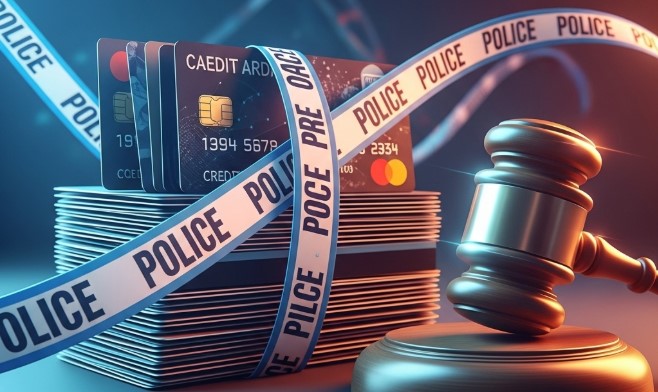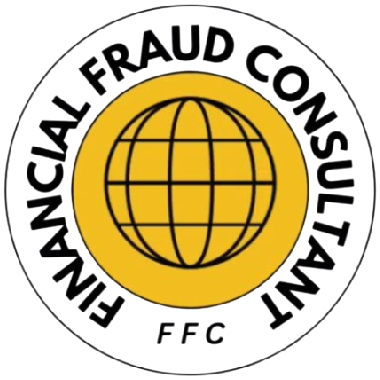
Financial transaction card fraud, at its core, involves the unauthorized use of a payment card (like a credit or debit card) or its associated information to make purchases, withdraw cash, or transfer funds without the cardholder’s consent [1, 4]. In our increasingly digital world, this type of fraud has become a significant concern, impacting individuals, businesses, and the financial system as a whole. The sophistication of these fraudulent activities is constantly evolving, making it crucial for everyone to understand the risks and the measures they can take to protect themselves.
Think of it this way: if someone steals your physical credit card and goes on a shopping spree, that’s transaction card fraud. Similarly, if a cybercriminal steals your credit card number online and uses it to buy goods, that also falls under this category [1]. The methods employed by fraudsters are diverse, ranging from low-tech physical theft to highly sophisticated cyberattacks.
Crypto wallet recovery help
Facing a locked or lost crypto wallet? Our specialized service provides expert crypto wallet recovery help. We assist with forgotten passwords, lost private keys, or damaged hardware wallets, using advanced techniques to restore access and retrieve your valuable digital assets securely and discreetly.
Why It’s a Serious Issue
Transaction card fraud isn’t just about the inconvenience of a canceled card. It carries serious consequences that ripple through the economy and deeply affect individuals:
- Financial Loss: Victims can suffer direct monetary losses from unauthorized charges, which can range from small amounts to thousands of dollars. Businesses also face significant financial burdens through chargebacks (where they have to refund the money to the cardholder), increased processing fees due to fraud, and the costs associated with investigating and managing fraudulent transactions [1]. These losses can impact their profitability and even their viability.
- Identity Theft: Often, transaction card fraud is a stepping stone to broader identity theft. Criminals who obtain your card details may also try to gather other personal information, such as your Social Security number, date of birth, or address, to open new accounts in your name, take out loans, or commit other types of fraud. Recovering from identity theft can be a long and arduous process [1].
- Erosion of Trust: Widespread fraud can significantly erode consumer trust in online transactions and the financial system as a whole. If people feel that their payment information is not secure, they may be less likely to engage in online commerce, which can have a detrimental effect on businesses and the digital economy.
- Criminal Activity: The proceeds from transaction card fraud often fund other illicit activities, including organized crime, drug trafficking, and even terrorism. By understanding and combating transaction card fraud, we are also contributing to the fight against these wider criminal enterprises.
Common Types of Transaction Card Fraud
Fraudsters employ various methods to obtain and misuse transaction card information. The tactics are constantly adapting to new technologies and security measures. Here are some common types [1, 2]:
- Card-Present Fraud: This involves using a stolen or counterfeit physical card at a point-of-sale (POS) terminal or ATM.
- Skimming: This is a prevalent tactic where criminals attach small, often difficult-to-detect devices to card readers (at gas pumps, ATMs, or even POS terminals) to steal the magnetic stripe data and sometimes the PIN as the card is swiped. This stolen information can then be used to create counterfeit cards.
- Counterfeiting: Creating fake credit or debit cards using stolen account information. These counterfeit cards can then be used for in-person purchases.
- Theft: Simply stealing physical cards from individuals’ wallets, mailboxes, or during burglaries.
- Card-Not-Present (CNP) Fraud: This occurs when the physical card isn’t present, such as in online, phone, or mail-order transactions.
- Fraudsters use stolen card details (card number, expiry date, CVV) obtained through data breaches, phishing, or other means to make unauthorized purchases remotely.
- The anonymity of the internet makes CNP fraud particularly challenging to combat.
- Phishing: Scammers use deceptive emails, text messages (smishing), or phone calls (vishing) that often impersonate legitimate organizations (like banks, online retailers, or government agencies) to trick individuals into revealing their card details, login credentials, or other sensitive personal information. These attacks often create a sense of urgency to pressure victims into acting without thinking.
- Account Takeover (ATO) Fraud: Criminals gain unauthorized access to a victim’s online accounts (banking, e-commerce, etc.) using stolen usernames and passwords. Once inside, they can make fraudulent purchases, transfer funds, or even change the account’s contact information to further their fraudulent activities. This often involves exploiting weak passwords or the lack of two-factor authentication.
- Identity Theft: Using someone else’s personal information, which may include credit card details, Social Security numbers, and addresses, to open new credit card accounts or conduct fraudulent transactions. This can have long-lasting and devastating consequences for the victim’s credit score and financial well-being.
- Friendly Fraud (Chargeback Fraud): A cardholder disputes a legitimate transaction with their bank to get a refund, often falsely claiming they didn’t authorize the purchase or didn’t receive the goods or services. While sometimes unintentional, it can lead to financial losses for merchants.
- Card Cracking/BIN Attacks: Fraudsters use automated tools to guess missing card details, such as the CVV or expiry date, often starting with a valid Bank Identification Number (BIN) to generate potential card numbers. They then test these combinations on various online platforms to see if they work.
How to Stay Safe from Transaction Card Fraud
Protecting yourself from transaction card fraud requires a multi-faceted approach, combining vigilance with proactive security measures [3, 4]:
- Keep Your Card Secure:
- Treat your cards with the same care as cash.
- Never leave them unattended in public places.
- Be mindful of where your card is when someone else is handling it (e.g., in restaurants).
- Sign new cards on the back immediately upon receipt.
- Monitor Your Accounts Regularly:
- Make it a habit to check your bank and credit card statements frequently, ideally weekly or even daily if your financial institution provides real-time transaction updates.
- Look for any transactions you don’t recognize, no matter how small the amount. Even small fraudulent charges can be a sign of larger activity.
- Set up transaction alerts via SMS or email if your bank or card issuer offers this service. This can notify you immediately of any activity on your account.
- Be Cautious Online:
- Shop Securely: Only make purchases on websites that use secure encryption. Look for “https://” at the beginning of the web address and a padlock icon in the browser’s address bar.
- Be Wary of Suspicious Communications: Be extremely cautious of unsolicited emails, text messages, or social media messages asking for your financial information. Legitimate organizations will rarely, if ever, ask for sensitive details via these channels. Never click on links or open attachments from unknown or suspicious sources.
- Consider Virtual Credit Card Numbers: Some banks offer the option to create temporary, single-use virtual credit card numbers for online purchases, which can limit your exposure if a website’s security is compromised.
- Use Secure Networks: Avoid conducting financial transactions on public Wi-Fi networks, which are often less secure. Use a Virtual Private Network (VPN) if you must use public Wi-Fi.
- Protect Your PIN and Passwords:
- Never share your PIN with anyone.
- Use strong, unique passwords for all your online accounts, including your online banking. A strong password should include a mix of uppercase and lowercase letters, numbers, and symbols.
- Enable two-factor authentication (2FA)1 whenever possible. This adds an extra layer of security by requiring a second verification step2 (e.g., a code sent to your phone) in addition to your password.
- Cover the keypad with your hand when entering your PIN at ATMs or POS terminals to prevent shoulder surfing.
- Be Aware of Skimming:
- Before using an ATM or a card reader at a gas pump, take a moment to inspect it for any signs of tampering, such as loose parts, unusual attachments, or misaligned components.
- If something looks suspicious, do not use the machine and report it to the bank or the store.
- Consider using tap-to-pay (contactless payments) or chip readers, which are generally more secure than swiping the magnetic stripe.
- Shred Sensitive Documents:
- Before throwing them away, shred any documents that contain your credit card numbers, bank account details, or other personal financial information. This includes old statements, receipts, and expired cards.
- Report Lost or Stolen Cards Immediately:
- If your credit or debit card is lost or stolen, contact your bank or card issuer immediately. Most have 24/7 customer service for this purpose. Prompt reporting can limit your liability for unauthorized charges.
- Be Cautious with Phone Calls:
- Never give your credit card details or other sensitive information to someone who calls you unexpectedly, even if they claim to be from your bank or another trusted organization. Scammers often use pressure tactics.
- If you receive such a call, hang up and call the institution directly using a phone number you know to be legitimate (e.g., from their official website or your statement).
- Keep Software Updated:
- Ensure that your computer, smartphone, and other devices have the latest operating system updates and security patches.
- Use reputable antivirus and anti-malware software and keep it up to date.
Staying informed about the different types of transaction card fraud and consistently practicing these safety habits are your best defenses against becoming a victim. Vigilance and a healthy dose of skepticism in the digital world can go a long way in protecting your financial well-being.
Scammed Online? Here’s When Banks Will Refund You
Have you encountered any attempts at transaction card fraud? What additional precautions do you take to stay safe? Share your experiences and tips in the comments below.
References
[1] DataVisor. “Transaction Fraud Explained: Types, Impact, and Detection.” [https://www.datavisor.com/wiki/transaction-fraud/](https://www.datavisor.com/wiki/transaction-fraud/) (Accessed May 25, 2025).
[2] Bitdefender. “7 Types of Credit Card Fraud & How Your Businesses Can Avoid Them.” [https://www.bitdefender.com/en-us/blog/hotforsecurity/7-types-of-credit-card-fraud-how-your-businesses-can-avoid-them](https://www.bitdefender.com/en-us/blog/hotforsecurity/7-types-of-credit-card-fraud-how-your-businesses-can-avoid-them) (Accessed May 25, 2025).
[3] Standard Chartered. “How to protect yourself from credit card fraud.” [https://www.sc.com/in/stories/how-to-protect-yourself-from-credit-card-fraud/](https://www.sc.com/in/stories/how-to-protect-yourself-from-credit-card-fraud/) (Accessed May 25, 2025).
[4] Citizens Bank. “9 Ways to Stay Safe from Credit Card Fraud and Scams.” [https://www.citizensbank.com/learning/9-ways-to-stay-safe-from-credit-card-fraud.aspx](https://www.citizensbank.com/learning/9-ways-to-stay-safe-from-credit-card-fraud.aspx) (Accessed May 25, 2025).




